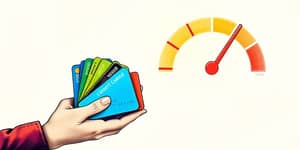Your life can change in an instant, and without the right precautions, unexpected events can lead to undue stress and debt. This article will guide you through the power of an emergency fund, helping you understand its purpose, set a realistic savings goal, and take practical steps to build and maintain a robust financial buffer.
Understanding the Emergency Fund
An emergency fund is a specially reserved sum of money designed to give you protection and peace of mind when unexpected costs appear. Rather than dipping into retirement accounts or relying on credit cards, this separate reserve acts as a safety net that keeps you afloat when life’s surprises strike.
By creating a dedicated pool of money, you shield yourself from the need to borrow at high interest rates or liquidate long-term investments during critical moments. Ultimately, an emergency fund preserves stability and enables you to focus on recovery instead of scrambling for cash.
Why You Need a Financial Buffer
Life’s unpredictability can trigger stress and force tough decisions. A robust emergency fund helps you face those moments with confidence rather than anxiety. It becomes the backbone of your financial health, providing a clear path through sudden challenges.
- Job loss or sudden income reduction
- Unexpected medical or dental bills
- Urgent car repairs or appliance breakdowns
- Major home maintenance or repair
With these reserves in place, you avoid disrupting your normal budgeting and preserve your long-term goals, ensuring that one setback doesn’t derail your broader plans.
Determining Your Savings Goal
Financial advisors universally recommend saving at least three to six months' worth of your essential expenses. This cushion should cover rent or mortgage, utilities, groceries, transportation, and minimum debt payments.
To calculate your target amount:
- Tally all essential monthly costs, including housing and necessities.
- Multiply that total by three for a conservative buffer, or six for maximum safety.
- Adjust based on your job stability, dependents, and industry risks.
For example, if your essential spending is $2,000 per month, your range would be $6,000 to $12,000. Tailoring these numbers to your personal circumstances ensures that your emergency fund matches your lifestyle and obligations.
Practical Steps to Build Your Fund
Starting or growing an emergency fund may seem daunting, but small habits quickly add up. Consistency and automatic routines can help you reach your goals without sacrificing your daily comfort.
- Open a separate account—preferably a high-yield accessible savings account.
- Automate regular deposits, even if it’s just $10 per week.
- Allocate windfalls such as tax refunds or bonuses directly to this fund.
- Curb nonessential spending and redirect those dollars toward your buffer.
By treating contributions as non-negotiable expenses, you create a dependable saving rhythm that continues even when budgets feel tight.
Maintaining and Growing Your Fund
An emergency fund is not a set-it-and-forget-it tool. It requires ongoing attention and adjustments. Life circumstances can shift—new dependents arrive, job roles change, or living costs rise—so your fund must evolve accordingly.
Whenever you need to tap into it for true emergencies, make replenishment your top priority. Avoid using it for vacations or routine maintenance. Periodically review the fund’s balance and compare it to your current budget to ensure it remains adequate.
Consider adding to the fund when you receive raises or achieve savings milestones, thereby boosting your financial resilience over time and reinforcing your capacity to weather unforeseen events without derailing other goals.
Key Savings Targets at a Glance
Common Pitfalls and How to Avoid Them
Even well-intentioned savers can slip into habits that erode their safety net. Recognizing and addressing these risks early ensures your fund remains effective when you need it most.
One of the most frequent mistakes is using the fund for nonemergencies—social events, new gadgets, or routine bills don’t qualify. Another risk arises when you neglect to replace money after a genuine emergency. A fund diminished but not replenished loses its purpose and leaves you vulnerable to the next shock.
Underestimating your needs can also backfire. Aim to err on the side of caution if your job is unstable or you have irregular expenses, and adjust your savings target accordingly.
Empowering Your Financial Future
Building an emergency fund transforms the unpredictable twists of life into manageable challenges. It gives you the freedom to pursue opportunities without fear of financial collapse. Every deposit you make is a commitment to your own stability, independence, and emotional well-being.
When the next unexpected expense appears, you will stand ready, anchored by your foresight and discipline. Begin today—take the first step by setting a modest target and automating your savings. Over time, you will watch your buffer grow, along with your confidence in facing whatever lies ahead.
Remember, resilience stems from preparation. A strong emergency fund is not just money in a bank; it’s the foundation of a more secure, empowered future.
References
- https://www.consumerfinance.gov/an-essential-guide-to-building-an-emergency-fund/
- https://www.nerdwallet.com/article/banking/emergency-fund-why-it-matters
- https://investor.vanguard.com/investor-resources-education/emergency-fund/why-you-need-one
- https://www.mycvcu.org/blog/importance-of-building-an-emergency-fund
- https://www.investopedia.com/terms/e/emergency_fund.asp
- https://www.canadalife.com/investing-saving/investing-101-basics-for-beginners/what-emergency-fund-how-much-should-have.html
- https://www.ally.com/stories/save/how-much-do-you-need-in-your-emergency-fund/
- https://corporatefinanceinstitute.com/resources/wealth-management/emergency-fund/










